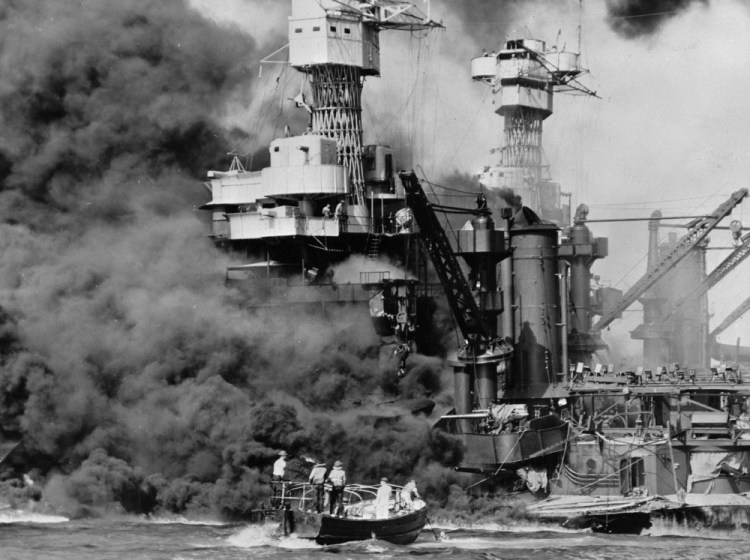Even the most world-changing events fade into history, and as they do, we lose their visceral force and forget their personal cost.
The attack on Pearl Harbor of Dec. 7, 1941 – that date that will live in infamy – is no different. The surprise air assault on the American Pacific fleet by the rising Japanese Empire changed the United States and the world. But it is now closer in time to the end of the Civil War than it is to the present.
FEW SURVIVORS LEFT
There will be no way to miss the passage of time at the ceremony Friday in Hawaii, as just 34 veterans of Pearl Harbor and World War II are expected to attend.
There aren’t that many left who saw nearly 200 Japanese planes – mistaken for American bombers by radar operators – appear out of the blue just before 8 a.m. They saw their friends and countrymen die. They fought back as what was supposed to be a peaceful Sunday turned into the start of four long years of war.
On that day, more than 2,300 members of the U.S. military were killed, along with 68 civilians. Another 1,178 were wounded, and countless others left scarred.
It is for all of them and their families that we commemorate Dec. 7 each year. For them, the day represents immeasurable loss.
It was also the day that arguably led to the America we know today. The attack shook the United States out of its isolationism and the division caused by the Great Depression. Within days, hundreds of thousands of Americans enlisted to fight fascism. Sixteen million Americans would eventually serve, and millions more would contribute at home, all working with one purpose.
When it was all said and done, the United States would be the deciding factor, and would emerge along with the Soviet Union as one of two world superpowers.
LOW POINT IN HISTORY
In many ways, the attack brought out the best in Americans.
But it also brought out some of the worst. With the wreckage still smoldering, the government began rounding up Americans of Japanese descent. In February 1942, President Franklin Delano Roosevelt issued Executive Order 9066, requiring all Japanese immigrants and their American-citizen children living in the Western states to be interned at remote camps.
About 120,000 Japanese-Americans were interned, many of whom lost homes and businesses during their time in the camps.
Now seen as one of the low points in American history, internment was widely supported at the time. The government said it was necessary to protect the country, and most Americans believed them.
Years later, we found out the truth – that the government did not really see Japanese-Americans as a threat. A formal apology did not come until 1988, when President Ronald Reagan and Congress approved reparations.
AVOID REPEATING MISTAKES
Let’s not make that mistake again. As of September, nearly 13,000 unaccompanied migrant children seeking asylum in the U.S. were being held in poor conditions in federally contracted shelters, five times the number as last summer, the result of a half-baked plan steeped in cruelty.
Children were forcibly separated from their parents at the border, too; though most have been returned, the cold-blooded practice continues, just more quietly.
The migrant prison camps are an inhumane and blunt response to a problem that requires a humane and delicate solution. They are not a perfect analogy to Japanese internment camps. But like internment, the wide-scale detainment of migrant children goes against our values.
Once again, the government is inflating the danger posed by a vulnerable group, and many Americans are buying it.
This time, it shouldn’t take decades to see how wrong they are.
Send questions/comments to the editors.


